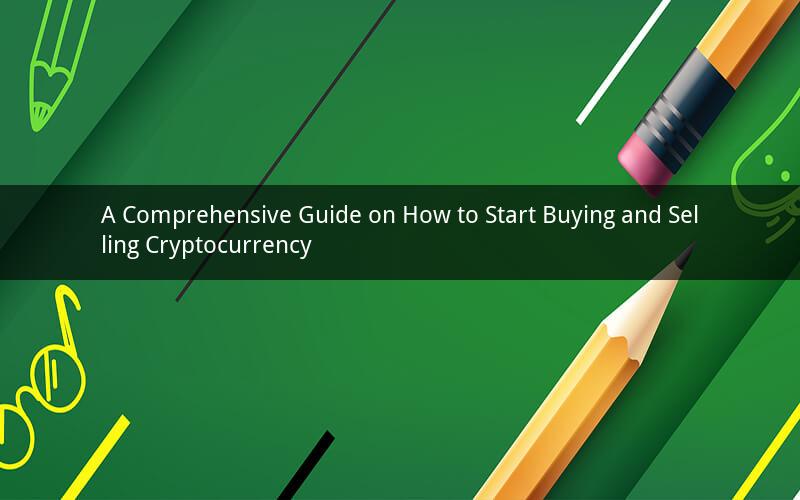
Introduction:
The world of cryptocurrency has gained immense popularity over the years, with more and more individuals seeking to participate in this emerging market. Buying and selling cryptocurrency can be an exciting and potentially profitable venture, but it requires knowledge, research, and careful planning. This guide will provide you with a comprehensive overview on how to start buying and selling cryptocurrency, from understanding the basics to executing successful trades.
1. Understanding Cryptocurrency
Cryptocurrency is a digital or virtual form of currency that uses cryptography for security. Unlike traditional fiat currencies, cryptocurrencies operate independently of a central authority, such as a government or bank. The most well-known cryptocurrency is Bitcoin, but there are thousands of other cryptocurrencies available, each with its own unique features and purposes.
2. Research and Choose a Cryptocurrency
Before diving into the world of cryptocurrency, it's crucial to research and identify a cryptocurrency that aligns with your investment goals. Consider factors such as market capitalization, trading volume, and the project's underlying technology. Some popular cryptocurrencies to consider include Ethereum, Litecoin, and Ripple.
3. Setting Up a Cryptocurrency Wallet
To buy and sell cryptocurrency, you'll need a cryptocurrency wallet. A wallet is a digital storage solution that allows you to store, send, and receive cryptocurrencies. There are several types of wallets available, including software wallets, hardware wallets, and web wallets. Choose a wallet that suits your needs and ensures the security of your digital assets.
4. Choosing a Cryptocurrency Exchange
To buy and sell cryptocurrencies, you'll need to use a cryptocurrency exchange. An exchange is an online platform that facilitates the buying and selling of cryptocurrencies. When selecting an exchange, consider factors such as fees, liquidity, security measures, and user experience. Some popular cryptocurrency exchanges include Coinbase, Binance, and Kraken.
5. Registering and Verifying Your Account
Once you've chosen an exchange, you'll need to register and verify your account. This process typically involves providing personal information, such as your name, address, and identification documents. The verification process ensures compliance with anti-money laundering (AML) and know your customer (KYC) regulations. Be prepared to wait for the verification process, as it may take a few days.
6. Funding Your Account
To start buying cryptocurrency, you'll need to fund your exchange account. You can do this by transferring funds from your bank account, using a credit/debit card, or transferring cryptocurrency from another wallet. Be aware of any fees associated with depositing funds and choose a method that is convenient and cost-effective for you.
7. Placing Orders
Once your account is funded, you can start placing orders to buy or sell cryptocurrency. Most exchanges offer various order types, including market orders (buy/sell at the current market price) and limit orders (buy/sell at a specific price). Decide on your strategy and place your orders accordingly. It's essential to research the market and understand the risks involved before executing any trades.
8. Monitoring and Managing Your Investments
After placing your first trade, it's crucial to monitor and manage your investments. Keep track of market trends, news, and updates that may impact the value of your chosen cryptocurrency. Adjust your strategy as needed and consider diversifying your portfolio to mitigate risk. Regularly review your investments and make informed decisions based on your goals and market conditions.
9. Safeguarding Your Cryptocurrency
Security is a top priority when dealing with cryptocurrency. Ensure that your wallet and exchange account are secure by using strong passwords, enabling two-factor authentication, and keeping your private keys private. Avoid storing large amounts of cryptocurrency on exchanges, as they can be vulnerable to hacking. Consider using hardware wallets or cold storage solutions for long-term holdings.
10. Staying Informed and Continuing Your Education
The world of cryptocurrency is constantly evolving, so it's essential to stay informed and continue your education. Follow reputable sources, join cryptocurrency communities, and attend workshops or webinars to enhance your knowledge and skills. Being well-informed will help you make better decisions and navigate the complexities of the cryptocurrency market.
FAQs:
1. Q: What is the difference between a cryptocurrency wallet and a cryptocurrency exchange?
A: A cryptocurrency wallet is a digital storage solution for your cryptocurrencies, while a cryptocurrency exchange is an online platform that facilitates the buying and selling of cryptocurrencies. You can use a wallet to store your cryptocurrencies, but you need an exchange to trade them.
2. Q: Can I lose all my money by investing in cryptocurrency?
A: Yes, investing in cryptocurrency carries risks, and you can potentially lose all your money. It's important to conduct thorough research, understand the risks, and invest only what you can afford to lose.
3. Q: How long does it take to verify my exchange account?
A: The verification process for an exchange account can vary depending on the exchange and the level of verification required. It may take a few hours to a few days, so it's best to start the process early.
4. Q: Can I trade cryptocurrency 24/7?
A: Yes, cryptocurrency markets operate 24/7, allowing you to trade at any time. However, it's important to consider time zones and market hours when executing trades.
5. Q: What is the best cryptocurrency to invest in?
A: There is no one-size-fits-all answer to this question. The best cryptocurrency for you depends on your investment goals, risk tolerance, and research. It's important to do thorough research and consider factors such as market capitalization, trading volume, and project fundamentals before making investment decisions.